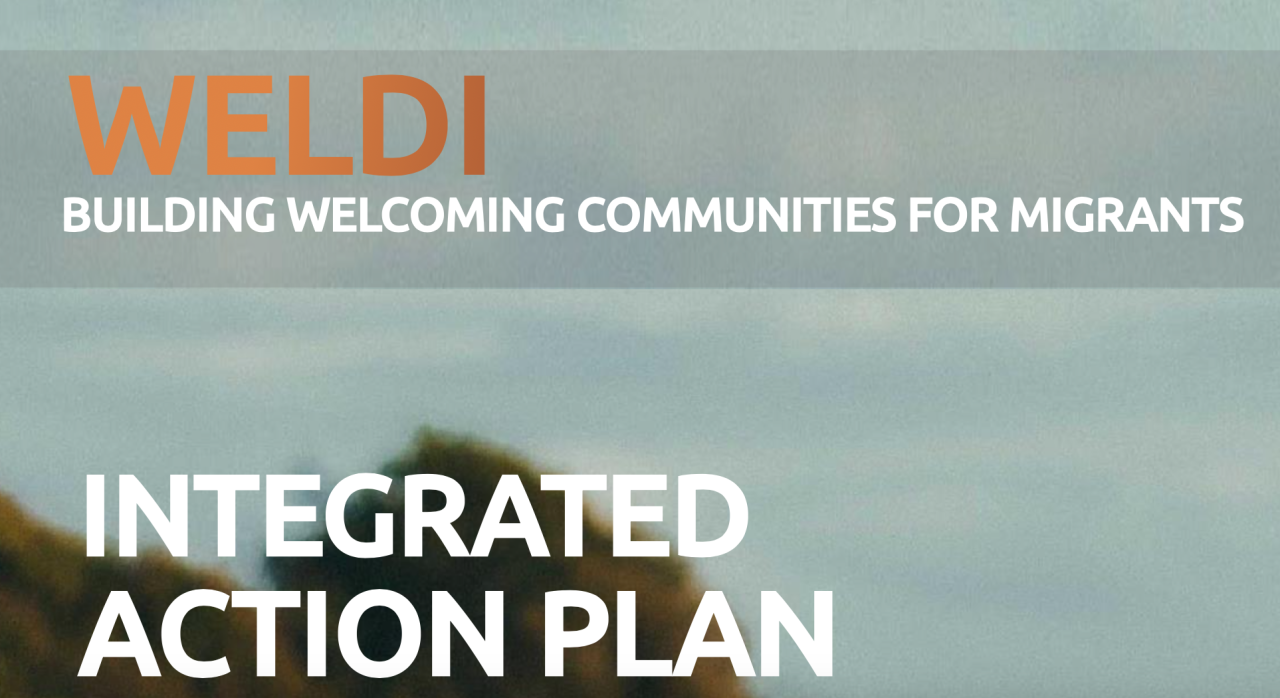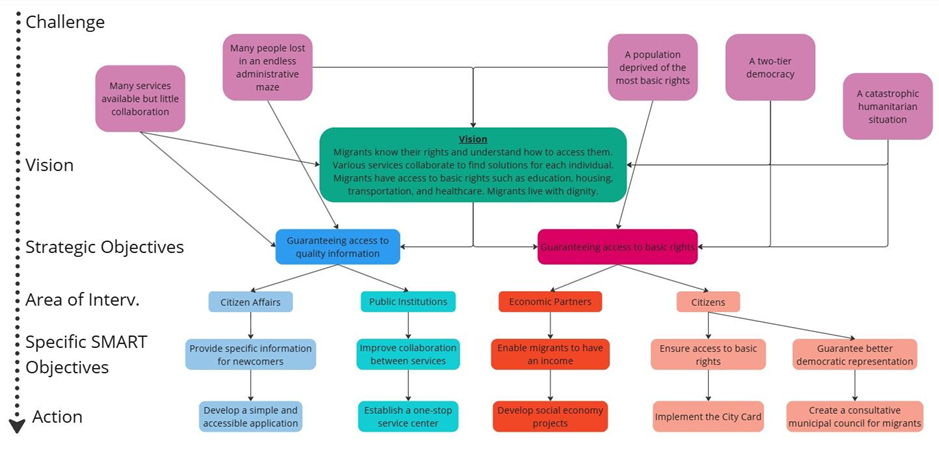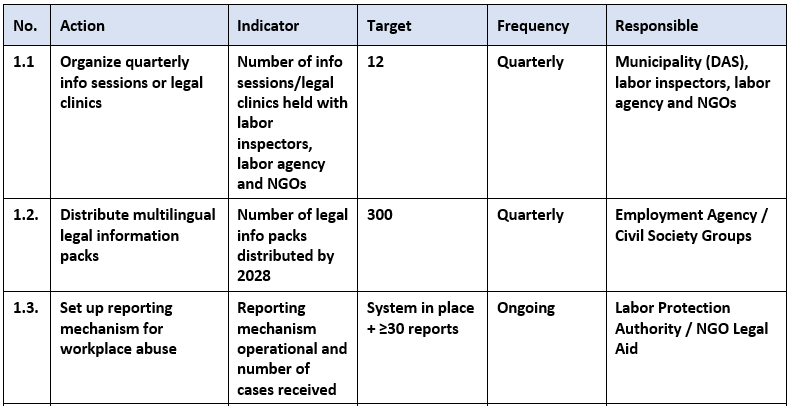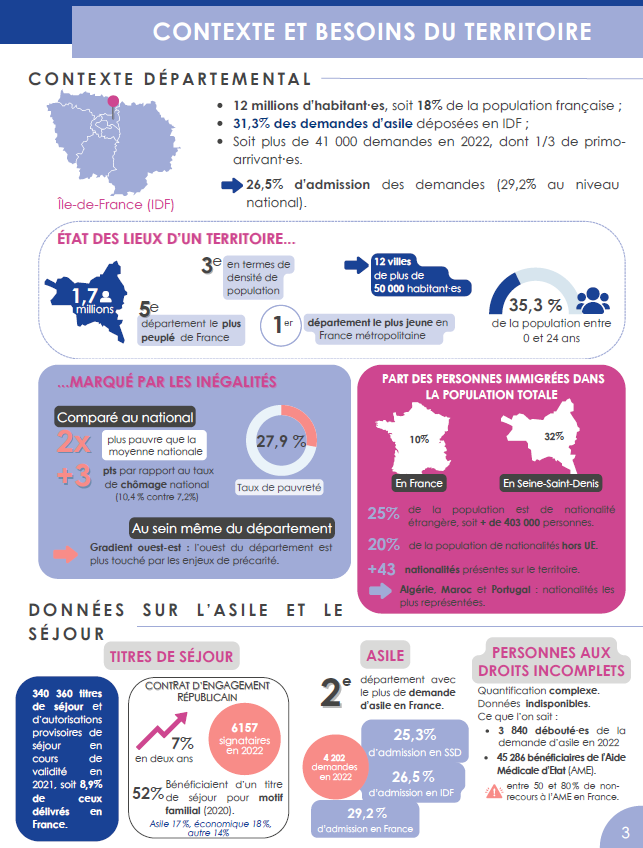The URBACT Action Planning Network Weldi is focused on “Building welcoming communities for migrants” - empowering local authorities to put human rights at the heart of their efforts to develop dignified approaches to welcoming newcomers and overcoming the obstacles that migrants can face in accessing their rights.
After 2+ years of networking and exchange, city partners are now finalising in late 2025 their Integrated Action Plans (IAPs) that set out what they aim to do in their city to deliver on this broad ambition at local level.
Based on the draft IAPs, one can already see how much inspiration the city partners have taken from their network journey and how it has helped in many cases to transform their vision and intended approach to migrant reception at local level. One can also see the diversity of local contexts and how each partner has developed a specific plan based on their own realities and the priorities of their URBACT Local Group – the foundation of the local participatory approach.
Diverse local approaches
For some cities, such as Cluj-Napoca in Romania, the action plan sets out a broad and integrated strategic approach to transforming the reception of migrants. This approach includes actions to improve services for newcomers (one-stop-shop, digital tools…), to improve public acknowledgement of the contribution of migrants (events, training…), to enhance collaboration between local stakeholders and migrants, and to create new channels for policy dialogue.
For other cities, the IAP takes a narrower focus, aiming to complete or address gaps in the existing measures already in place to support a human-rights based approach to migrant reception. For example, in Lampedusa (Italy), the IAP focuses on particular challenges identified in the context of access to health services – particularly for women and around maternal, sexual and reproductive health.
Meanwhile, for the Lead Partner city of Utrecht, which already has a well-developed approach to migrant inclusion based on the Plan Einstein model (also the subject of the URBACT Plan Einstein Academy Innovation Transfer Network), the IAP focuses primarily on the idea of developing a ‘city card’ to take the next step in safeguarding access to fundamental rights for people without papers living in the city. In this context, the integrated approach is built into the design of this one key action, which aims to complement existing local activities.
All these approaches reflect the richness of the exchanges within the network, the diversity of local contexts within the partnership and the flexibility of the IAP as a tool to present vastly different plans of action, even within the same network. At the same time, some tips and recommendations apply to all cities and all contexts, no matter what the focus of the plan.
Visualising the logic running through the plan
One specific recommendation for creating a high-quality, coherent IAP is to have a well-presented visualisation of the strategic logic that runs through the plan and connects all its parts. This can add significant value in clarifying and communicating how the IAP holds together as a logical, coordinated response to the identified challenges - whether to an internal or external audience.
The visualisation of the logic should manage to bridge the gap that can exist between understanding the individual actions set out later in the plan and the overarching vision for the IAP defined by members of the URBACT Local Group (ULG).
Typically, the pathway from vision to action can be expressed through a small number of strategic objectives, each supported by more specific objectives or intervention areas. These provide a natural way to group and present the planned actions.
Even without examining individual actions, considering the plan at the level of its intervention areas or specific objectives offers a clear understanding of the city’s overall approach and where it intends to take action. It also helps stakeholders reflect on whether any major areas of intervention are missing, supporting a more comprehensive and integrated strategy.
For example, in the draft intervention logic of Liège (Belgium), we can see their approach for ensuring that “migrants know their rights and understand how to access them” (see Figure 1).
Figure 1: The draft IAP of Liege has a clear presentation of its intervention logic
The visualisation shows that they plan to work on both guaranteeing access to quality information and guaranteeing access to basic rights. To achieve these two ‘strategic objectives’, it aims to take action in distinct areas, including: providing information and services to newcomers, improving collaboration between services (public institutions) and working with economic partners.
We can see that, even without looking yet at the specific actions planned under these headings, we can understand the overall strategic approach being proposed by the city and where it aims to focus its attention.
Putting planned actions at the heart of the IAP
The IAPs should be action focused. To ensure this - after the presentation of the intervention logic - the core of each IAP should be a clearly presented set of planned actions. A tried and tested method for doing this is in the form of summary action tables. These can be used to set out just the key information needed to present and understand what is planned.
Frequently occurring content in these tables includes for each separate action: name of the action; short description; output targets; responsible body (and partners); some indication of resource needs; and an estimation of the implementation timeframe.
The level of specificity provided under each heading can vary according to how far the city has got with the planning. But just by presenting all the actions in a concise, logical, structured way, without overwhelming the tables with too many details, readers can gain a clear understanding of everything that the local partnership plans to do in the city.
Figure 2: The draft IAP of Timisoara uses clear, well-structured summary action tables
The IAP of Timisoara (see Figure 2) provides a good example of how this can be done in a simple way, with tables that provide a numbered list of actions, output indicators and targets, the expected frequency of delivery of each action and the diverse actors who are taking responsibility for different actions.
Effectively balancing ‘internal’ planning detail and external engagement
Perhaps the key strengths of both the intervention logic visualisation and the summary action tables are that they find the required ‘sweet spot’ between providing sufficient action planning details and setting out a plan and approach that is easy to understand and build engagement around. Too much detail can make a plan inaccessible to local stakeholders; too little can make it weak and of limited value in driving future actions.
This same logic should be applied to all sections of the IAP. Not all the detailed activities undertaken in the network to understand the local context and challenges – critical though they are in the URBACT journey – need to be reported in the IAP itself. Part of keeping the IAP action focused is that it should probably not take until half-way into the document to get to the presentation of the intervention logic and the action tables.
Infographics, charts and summaries can be used to present the context, background and challenges facing the city – the information required to understand the plan of action – in short, concise ways. This is more important and more valuable than pages and pages of background information, which can ultimately serve to make the plan of action less accessible to people that the city wants and needs to engage.
Figure 3: The draft IAP of Seine-Saint-Denis shows how infographics can be used to communicate a wealth of background information and context
The critical importance of future governance and stakeholder engagement.
The final message for Weldi partners (and other APN cities) is that one of the key findings of the URBACT IAP Study 2 published in 2023 was that a critical success factor for future implementation of URBACT Integrated Action Plans (IAPs) is an effective process of governance and ongoing stakeholder involvement.
The IAPs should not be understood as project plans which have to be implemented to the letter and where the precision of the planning is the most important element. Rather, ideas continue to evolve and change and the lessons and inspiration of the URBACT journey continue to be built upon as part of a longer process.
For example, actions as described in the IAP often evolve as they feed into specific funding applications. Success typically comes when local stakeholders continue to develop, refine and deliver these planned actions.
Equally, it is not necessary to have identified precisely how much every action will cost or exactly which funding source will be used for each action. But to feed into future reflections on how to implement and fund actions, it is helpful to have identified which actions need significant investments and map out potential fundings sources for specific types of action.
For these reasons, almost regardless of the level of planning detail achieved in the IAP, it is critical that cities taking part in Action Planning Network like Weldi take the time before finalising their plan to confirm and set out the future governance arrangements and plans for ongoing involvement of ULG members and other local stakeholders. Ultimately, these will be the processes that further refine actions, develop specific funding applications and implement the actions required to deliver on the action plan’s clear strategic approach.
I look forward to following the ongoing journeys of Weldi partner cities as they continue their progress towards building ever-more welcoming communities for migrants - building on the plans set out in their IAPs - and wish them all the best in their endeavours.





